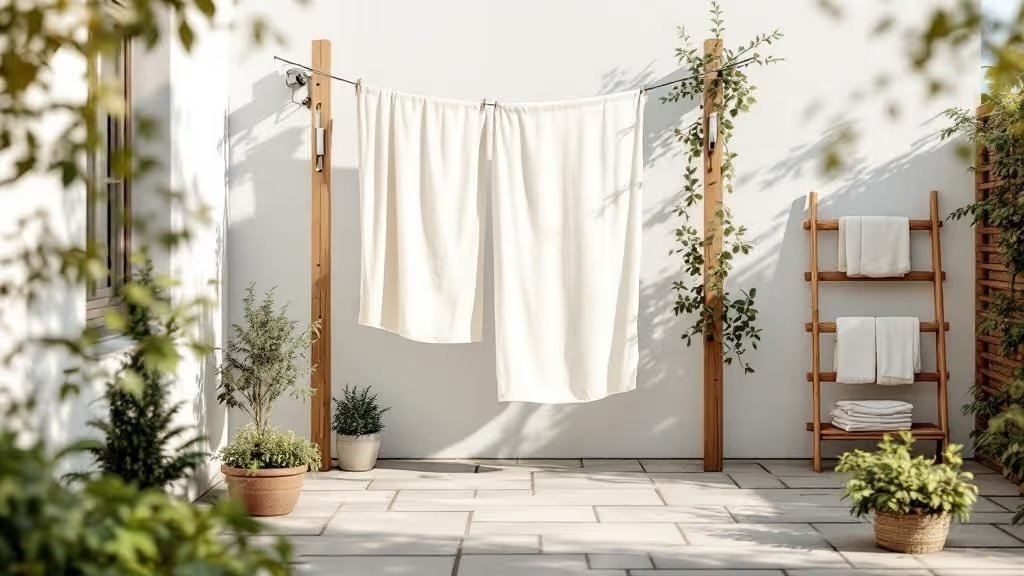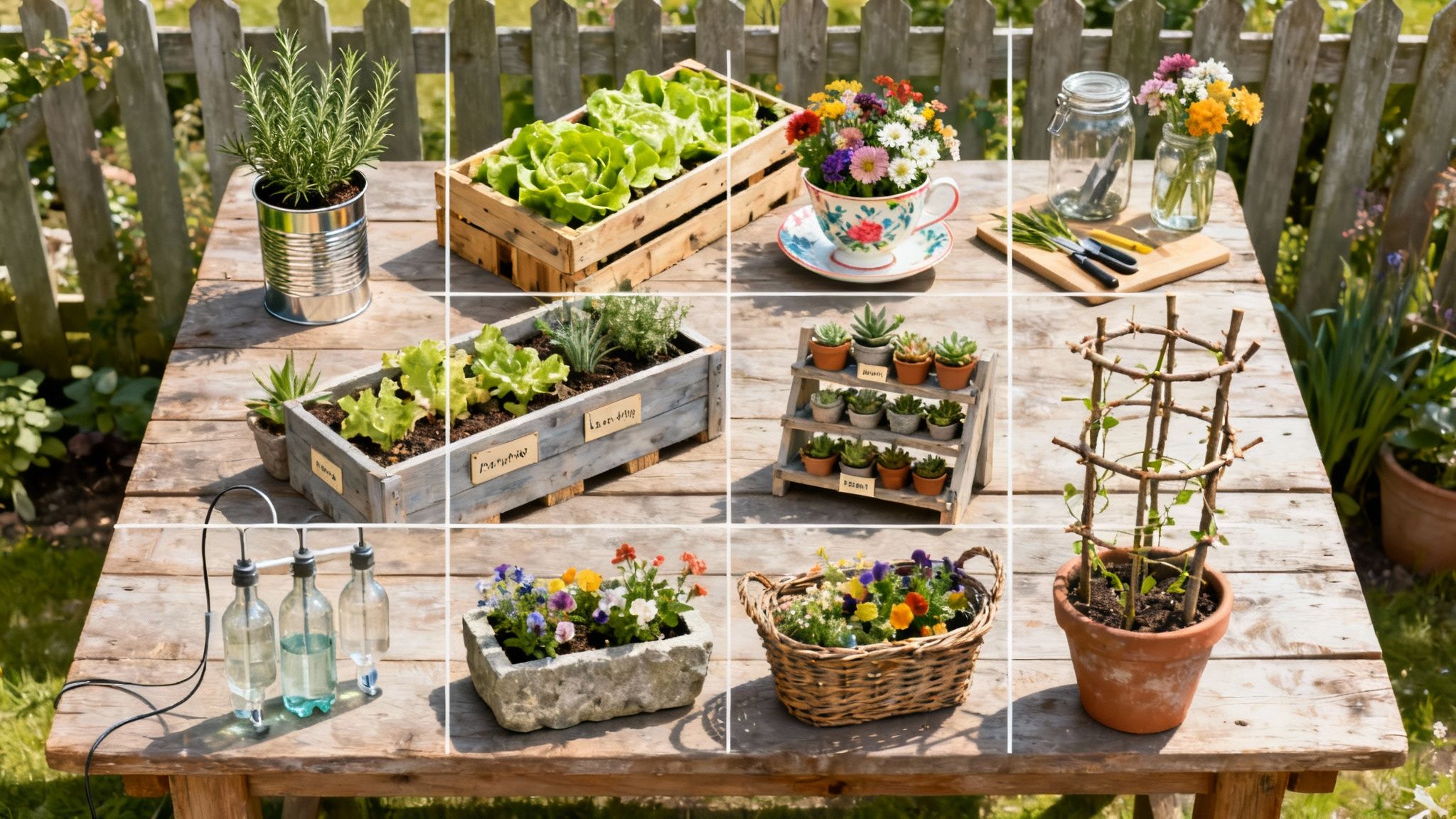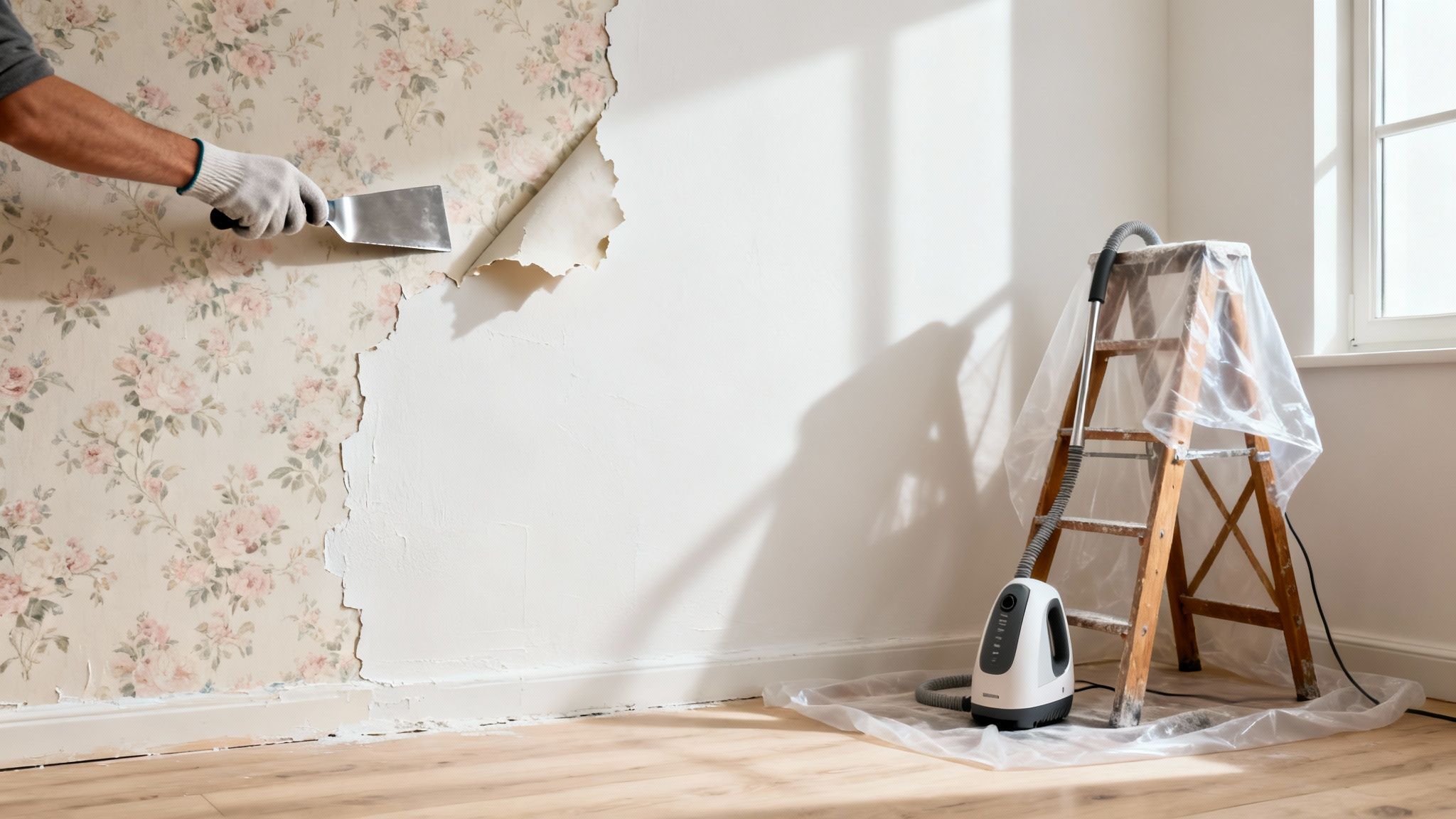The simple act of line-drying laundry connects us to a more sustainable, energy-efficient way of life. It’s a sensory pleasure-the scent of sun-dried linen, the gentle flapping in the breeze. But a practical washing line doesn't have to be a garden eyesore or a clumsy indoor obstruction. Modern design has transformed this household essential from a purely functional item into a clever, space-saving, and even stylish home feature.
Whether you have a sprawling lawn, a compact patio, a tiny balcony, or just a spare corner indoors, there is a perfect solution waiting for you. This guide moves beyond the traditional post-to-post setup to showcase a curated selection of the best washing line ideas. We will explore innovative designs that cater to every need, space limitation, and aesthetic preference.
We'll delve into the specifics of each type, from discrete retractable marvels and high-capacity rotary airers to classic pulley systems reinvented for modern living. This article provides actionable tips to help you choose, install, and maximise the ideal setup for your home. Get ready to rethink your laundry routine and discover how the right washing line can enhance both your home's functionality and its overall charm.
1. Retractable Washing Lines
Retractable washing lines are the ultimate space-saving solution for modern gardens, patios, and balconies. This ingenious system consists of a wall-mounted unit containing one or more coiled lines. When you need to dry laundry, you simply pull the line or lines out and hook them onto a secure anchor point opposite, creating a taut and functional drying space out of thin air.
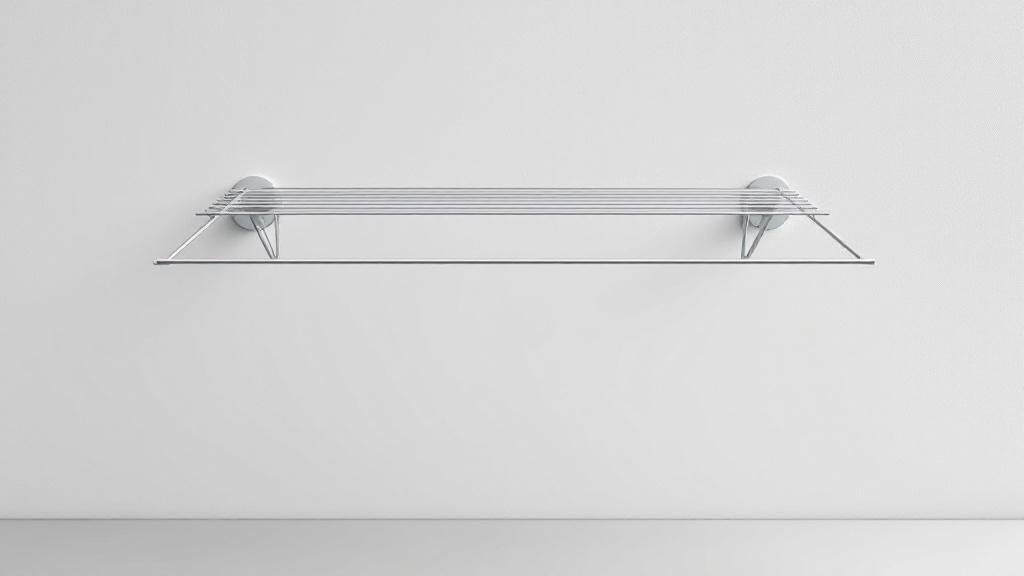
Popularised by household innovators like Brabantia and the Australian company Hills Industries, these lines are a direct response to the needs of urban living where outdoor space is a premium. Once your clothes are dry, the lines retract neatly back into their casing, disappearing from view and freeing up your garden for entertaining, playing, or simply relaxing. This makes them one of the most versatile washing line ideas available.
### When to Choose a Retractable Line
This solution is ideal for anyone who values a clutter-free outdoor area. If your garden doubles as a social space or you have a compact courtyard, a retractable line preserves the aesthetic and functionality of the area. It is also a fantastic choice for utility rooms or garages, offering a discreet indoor drying option for rainy days without permanently occupying valuable floor space.
### Key Implementation Tips
To get the most out of your retractable washing line, consider these practical steps:
- Installation Height: Mount the unit at a height that is comfortable for you to reach without overstretching. A typical recommendation is slightly above head height, ensuring clothes don't drag on the ground.
- Material Choice: Opt for models with UV-protected PVC or stainless steel lines. These materials resist weathering, prevent sagging, and are less likely to stain your clean laundry.
- Maintain Tension: Avoid overloading the lines. Adhering to the manufacturer's weight limit is crucial for maintaining the spring mechanism's tension and ensuring the line remains taut for years to come.
- Regular Cleaning: Periodically wipe down both the line and the casing mechanism. This prevents dirt build-up that could cause the line to jam or transfer grime onto your freshly washed clothes.
2. Rotary Washing Lines
A true icon of suburban gardens, the rotary washing line is a highly efficient and popular outdoor drying solution. This design features multiple arms that extend from a central pole, much like an umbrella. The lines are strung between these arms, creating a large, circular drying area that rotates in the breeze, which helps to speed up drying times and expose all items to the sun.
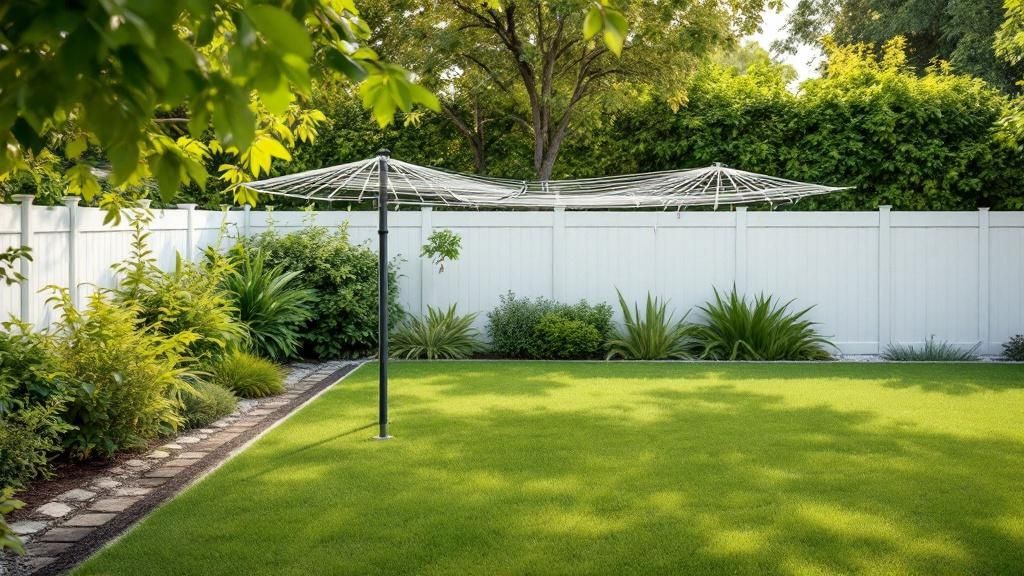
Popularised in the post-war era by the iconic Australian Hills Hoist, invented by Lance Hill, this design became a symbol of modern family life. Today, leading brands like Brabantia and Leifheit have refined the concept with features like adjustable heights and easy-to-use lift mechanisms. Its ability to accommodate several laundry loads at once while occupying a minimal ground footprint makes it one of the most practical washing line ideas for family homes.
### When to Choose a Rotary Line
A rotary line is the perfect choice for homes with a dedicated garden or lawn area. If you frequently wash large loads of laundry, including bulky items like bedding and towels, its generous capacity is a significant advantage. It is especially suited for families who need a durable, high-volume drying solution that can withstand regular use and make the most of sunny, breezy days.
### Key Implementation Tips
To maximise the performance and lifespan of your rotary washing line, follow these essential tips:
- Secure Foundation: Installation is key. Ensure the central pole is set securely in the ground, ideally using a concrete base or a purpose-built ground spike. This provides stability and prevents it from leaning, especially when fully loaded.
- Even Weight Distribution: When hanging your laundry, distribute the weight evenly across all arms of the rotary line. This prevents undue stress on one side and allows the line to rotate freely and efficiently in the wind.
- Weather Protection: To protect the mechanism and lines from damage, fold the arms down or remove the entire unit during high winds and storms. Many models come with a weatherproof cover for added protection when not in use.
- Annual Maintenance: Keep the rotation mechanism working smoothly by oiling it once a year. A quick wipe-down of the lines before each use will also ensure your clean clothes stay pristine.
3. Indoor Drying Racks
Indoor drying racks are the quintessential solution for rainy days and homes without outdoor space. These portable, often foldable, clotheslines are designed specifically for indoor use, offering a practical way to dry laundry in apartments, utility rooms, or anywhere outdoor drying isn’t an option. They are a cornerstone of modern, flexible living, providing essential functionality without permanent installation.
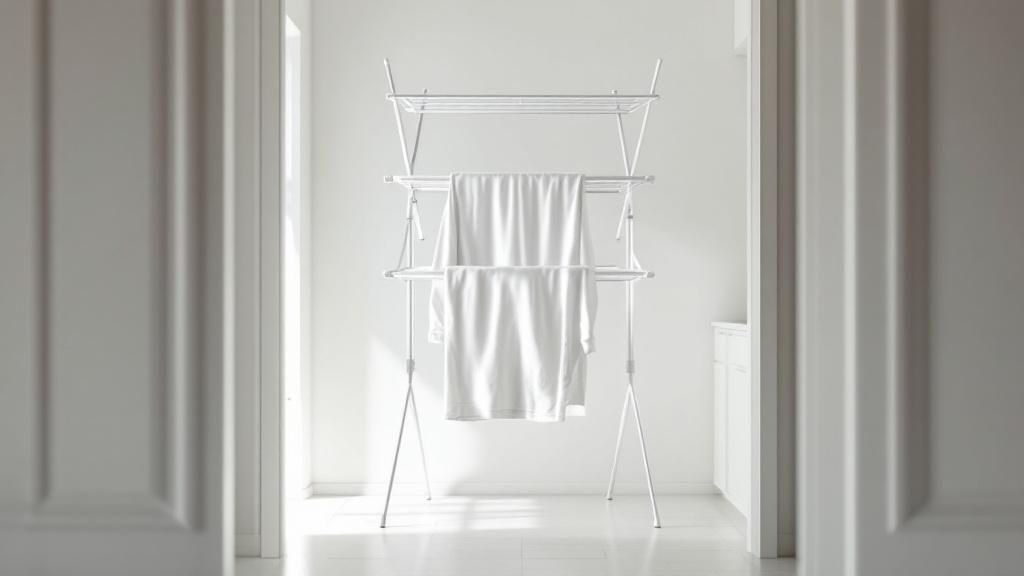
Popularised by brands like IKEA with its minimalist "MULIG" rack and Brabantia's space-efficient tower dryers, these racks have become indispensable in many households. Their rise in popularity is closely linked to urban living trends and a growing focus on energy conservation, offering a cost-effective and eco-friendly alternative to tumble dryers. From simple accordion-style racks to large, multi-tiered towers, there is a design to suit every need and space.
### When to Choose an Indoor Rack
This solution is a necessity for anyone living in an apartment or a home without a garden. It is also an essential backup for those unpredictable British weather days when outdoor lines are unusable. If you are looking to reduce your energy bills and environmental impact by avoiding the tumble dryer, an indoor drying rack is one of the most effective washing line ideas to adopt. They are also perfect for delicate garments that cannot be machine-dried.
### Key Implementation Tips
To get the most out of your indoor drying rack and ensure your clothes dry efficiently, follow these practical steps:
- Strategic Placement: Position your rack in a well-ventilated area, such as near an open window or in a room with an extractor fan, to prevent moisture build-up and musty smells. Placing it near a gentle heat source like a radiator can also speed up drying.
- Maximise Airflow: Don't overcrowd the rack. Leave a small gap between each item of clothing to allow air to circulate freely. This simple step significantly reduces drying time and ensures everything dries evenly.
- Promote Even Drying: For heavier items like jumpers or jeans, rotate them periodically. Turning them over and repositioning them on the rack helps all parts of the garment to dry at a similar rate.
- Choose for Mobility: If you need to move the rack between rooms, consider a lightweight model or one with wheels. This makes it easy to shift from a utility room to a warmer living area without disturbing your drying laundry.
4. Pulley Washing Lines
Evoking a sense of timeless charm and clever practicality, pulley washing lines are a traditional system perfect for connecting two distant points. This classic setup uses a continuous loop of line running through two pulley wheels. One pulley is fixed to a building, often near an upper-floor window, while the other is attached to a post, tree, or wall at the far end of the garden, creating a functional and efficient laundry transport system.
This method, popularised in settings from New England colonial homes to bustling urban tenements, allows you to hang an entire load of washing without moving from a single spot. By simply pulling the line, you can send freshly pegged clothes out to dry and bring them back in again. This makes it one of the most convenient washing line ideas for homes with challenging access, long gardens, or for those who simply appreciate its nostalgic, mechanical ingenuity.
### When to Choose a Pulley Line
A pulley system is the ideal solution for properties where garden access is awkward or limited. It's particularly useful for flats or houses where the only direct outdoor access is from an upper-storey window. If you have a very long, narrow garden, it saves you from walking back and forth, turning laundry day into a far more stationary and less strenuous task. It also excels in sloped gardens where a traditional rotary line may not be level.
### Key Implementation Tips
To ensure your pulley washing line operates smoothly and stands the test of time, follow these key tips:
- Choose Quality Components: Opt for marine-grade stainless steel or galvanised steel pulleys and brackets. These materials are designed to withstand the elements, resisting rust and corrosion for years of reliable service.
- Ensure Proper Tension: The line needs to be taut enough to prevent excessive sagging when loaded with wet clothes, but not so tight that it strains the anchor points. Use a line tensioner for easy adjustments as the line naturally stretches over time.
- Regular Maintenance: A few times a year, apply a silicone-based lubricant to the pulley wheels to keep them spinning freely and quietly. This small step prevents squeaking and ensures a smooth operation.
- Consider Line Height: Install the line so it has a slight downward slope away from the house. This encourages rainwater to run off and prevents it from pooling, helping your clothes dry faster and keeping the line cleaner.
5. Wall-Mounted Folding Lines
Wall-mounted folding lines offer a robust, high-capacity drying solution that cleverly combines permanence with flexibility. Unlike retractable lines, these systems fold out from a wall-mounted base, concertina-style, to create a sturdy frame with multiple lines. When laundry day is over, the entire frame folds neatly back against the wall, often protected by a neat cover.
Popularised by brands like Brabantia with their iconic WallFix dryer, and a common sight on European apartment balconies, this design is a masterclass in urban space optimisation. It provides the generous line space of a small rotary dryer without demanding any permanent ground space, making it one of the most practical washing line ideas for modern, compact living.
### When to Choose a Folding Line
This is the perfect choice for homes with limited garden space but a solid exterior wall, such as a patio, a narrow side-return, or a balcony. If you regularly wash large loads but don't want a permanent rotary line dominating your outdoor area, a folding frame provides an excellent compromise. They are also brilliant for sheltered spots like carports or large utility rooms, offering a reliable drying space whatever the weather.
### Key Implementation Tips
To ensure your wall-mounted folding line is both secure and long-lasting, follow these key recommendations:
- Secure Mounting: These units can be heavy, especially when loaded with wet laundry. Always mount them directly into solid masonry or secure wall studs. Use the fixings provided or upgrade to heavy-duty anchor bolts for peace of mind.
- Hinge Maintenance: The folding mechanism is crucial to the line’s function. Apply a small amount of silicone-based lubricant to the hinges once a year to keep the opening and closing action smooth and prevent rust.
- Respect Weight Limits: Distribute heavy items like towels and jeans evenly across the lines and never exceed the manufacturer's stated weight capacity. This prevents the arms from bending and protects the wall fixings from strain.
- Protective Cover: If your model comes with a protective cover or storage box, use it. This shields the lines from dirt, UV degradation, and bad weather, keeping them clean and extending their lifespan.
6. Ceiling-Mounted Airer Systems
Ceiling-mounted airer systems are a wonderfully traditional and space-efficient solution, bringing Victorian-era ingenuity into the modern home. Often known as a "Sheila Maid," this system uses a simple pulley mechanism to raise and lower a wooden or cast iron rack. This allows you to hoist your wet laundry up towards the ceiling, taking advantage of naturally rising warm air for faster, more efficient drying.

Popularised in Victorian kitchens and sculleries, these airers have seen a resurgence in popularity due to their timeless charm and practicality. They keep your floor space completely clear, making them an excellent choice for utility rooms, kitchens, or even high-ceilinged hallways. By lifting clothes out of the way, they declutter your living area while providing a substantial amount of drying space, proving that some of the best washing line ideas have truly stood the test of time.
### When to Choose a Ceiling-Mounted Airer
This is the perfect solution for homes where floor space is limited but ceiling height is generous. It is particularly effective in utility rooms, boot rooms, or above a heat source like a radiator or an Aga-style cooker, which significantly speeds up drying time. If you appreciate traditional design and want a functional piece that adds character to your home, a ceiling-mounted airer is an unparalleled choice for indoor drying.
### Key Implementation Tips
To ensure your ceiling-mounted airer is both safe and effective, follow these key installation tips:
- Check Ceiling Support: Before installation, confirm that your ceiling joists can safely support the full weight of the airer when loaded with wet, heavy laundry. This is a critical safety step.
- Strategic Placement: Position the airer above a natural source of warmth if possible. The rising heat will act as a gentle, low-cost tumble dryer, making the process much quicker.
- Upgrade the Rope: For enhanced durability and longevity, consider replacing the standard-issue rope with high-quality marine rope. It is designed to withstand moisture and heavy loads without stretching or fraying.
- Balance the Load: Distribute the weight of wet clothes evenly across the slats or bars. This prevents undue strain on one side of the pulley system and ensures the airer remains level and stable.
7. Parallel Line Systems
Parallel line systems are the quintessential, time-tested solution for air-drying laundry. This simple yet highly effective setup consists of multiple lines stretched taut and parallel to each other between two sturdy posts or wall-mounted brackets. It’s a design that maximises drying capacity within a dedicated linear space, making it a firm favourite for family homes and gardens of all sizes.
Popularised by decades of domestic tradition and a feature of post-war housing developments, this method remains one of the most practical washing line ideas. Its enduring appeal lies in its simplicity, low cost, and immense customisability. Whether in a rural farmhouse garden or a modern suburban backyard, a parallel line system provides an expansive and reliable area to dry everything from bedsheets to smalls with ease.
### When to Choose a Parallel Line System
This is the ideal choice for households with large laundry loads and a dedicated, rectangular outdoor space. If you prioritise maximum drying capacity over a concealed or compact design, a parallel system is unmatched. It is particularly well-suited for long, narrow gardens where it can run alongside a fence or path without encroaching on the main lawn or patio area, offering a permanent and robust drying solution.
### Key Implementation Tips
To ensure your parallel line system is both functional and long-lasting, follow these key tips:
- Secure the Posts: For maximum stability, set your support posts in concrete footings. This prevents them from leaning over time under the weight of wet laundry and the force of the wind.
- Adjustable Tension: Incorporate turnbuckles at one end of each line. These simple hardware devices allow you to easily tighten any slack that develops, keeping your lines perfectly taut for efficient drying.
- Optimal Spacing: Position the parallel lines approximately 30-45 cm (12-18 inches) apart. This provides enough room for air to circulate freely between garments, speeding up drying time and preventing items from touching.
- Line Material: Choose a high-quality, UV-resistant line material, such as steel-core PVC-coated rope. This prevents the line from perishing in the sun, sagging, or transferring marks onto your clean clothes.
Washing Line Types Comparison Guide
Choosing Your Perfect Line for Sun-Kissed Laundry
Choosing the right washing line is far more than a simple chore; it’s an opportunity to enhance your home's functionality, embrace sustainability, and even add a touch of personal style. Throughout this guide, we've explored a diverse range of washing line ideas, from the space-saving ingenuity of retractable systems to the classic, high-capacity appeal of a traditional rotary line. Each solution offers a unique blend of benefits tailored to different living spaces, laundry volumes, and aesthetic preferences.
Synthesising Your Perfect Laundry Solution
Let's revisit the core takeaways to help you make an informed decision. The ideal choice hinges on a careful assessment of your specific circumstances.
- For Compact Urban Spaces: If you have a small balcony, patio, or even just a well-ventilated indoor area, retractable and wall-mounted folding lines are unparalleled. They offer impressive drying capacity when needed and virtually disappear when not in use, preserving your precious outdoor or indoor living space.
- For Traditional Gardens and Large Families: The rotary washing line remains the undisputed champion for handling large volumes of laundry. Its ability to catch the breeze from every direction ensures efficient drying, while modern designs offer easy installation and height adjustment. Similarly, a robust parallel line system offers immense capacity for households with significant laundry needs.
- For Indoor and All-Weather Drying: To combat the unpredictable British weather, an indoor solution is essential. Ceiling-mounted airer systems, like the classic Sheila Maid, utilise vertical space brilliantly, keeping laundry out of the way. For smaller loads or apartment living, versatile indoor drying racks provide a portable and convenient option.
Actionable Next Steps to Take
Before you make a purchase, take a moment to perform a quick "laundry audit."
- Measure Your Space: Get precise measurements of the area where you plan to install your line, whether it's a garden, a utility room, or a balcony. Note any potential obstructions.
- Assess Your Laundry Load: Consider your average weekly laundry volume. Do you wash for one person, a couple, or a large family? This will directly influence the line length and capacity you require.
- Evaluate Your Lifestyle: Think about your routine. Do you prefer to do one large wash at the weekend or smaller loads throughout the week? This can help you decide between a high-capacity outdoor line and a more flexible indoor option.
By investing thought into these washing line ideas, you're not just buying a piece of equipment; you're optimising a fundamental household task. A well-chosen system saves you money on energy bills, reduces your carbon footprint, and prolongs the life and freshness of your clothes. It is a small change that delivers significant, lasting benefits, transforming laundry day from a necessary evil into a simple, satisfying, and sustainable ritual.

